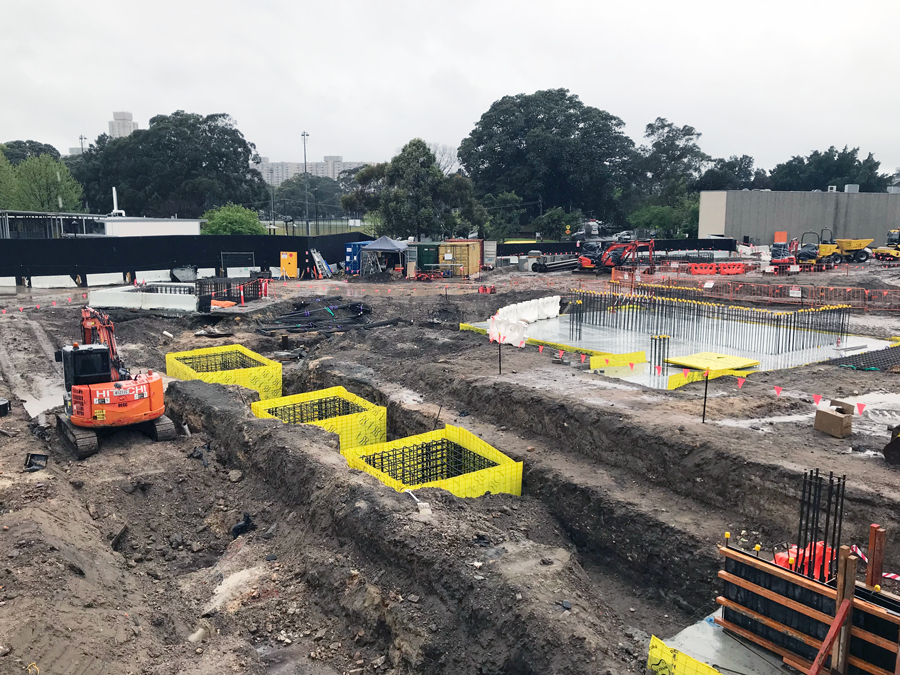What is the best type of formwork?

Formwork is the support given to green concrete until it cures and hardens, attaining its final strength. The type of formwork and the way it is built determines the geometry, size and finish of the completed structure.
Formwork products can generally be grouped into pre-formed types, and build-on-site types. There is a whole range of different options for different purposes. However, this article focuses on the advantages of two popular products; the pre-formed polyethylene Pecafil, and traditional plywood Formply.
What is Pecafil?
Pecafil is a formwork material made from steel wire mesh which is covered on both sides with a tightly fixed polythene layer. It is fast and easy to use, and can do double-duty as a construction barrier guard or scrim. Pecafil formwork elements can be used to build foundations, footings, pilings, pits and slabs. This permanent formwork is environmentally friendly, groundwater-neutral and recyclable.
In contrast to plywood or steel formwork, Pecafil can be moulded into custom shapes prior to delivery. Consequently, it is very quick to install. Its lightweight construction makes it easy to construct by hand, plus the pre-formed elements can be cut and adapted on site if necessary.
What is Formply?
Formply, formwork or hard face is made from a structural plywood coated on both sides with a film veneer. This veneer makes it resistant to swelling and warping, and therefore ideal for repetitive use for concrete formwork in floors, walls, frames, bridges and other structures. The film coating makes it much more durable and resistant to abrasion than plain uncoated ply. Plus, it’s resistant to the alkalinity of concrete meaning it lasts well even with repeated use.
It is easily sawn and shaped tools providing advantages and forming difficult areas. It is rigid, stable, lightweight, and easy to install, meaning large areas can be laid without swelling and expansion.
Pecafil vs Formply
Which is the best formwork method for your next project? Let’s take a look at the pros and cons of both permanent forms like Pecafil, and temporary forms such as formply.
|
|
PROS |
CONS |
|
Pecafil |
· Fast, simple laying of the formwork · Eliminates time and costs of de-moulding, cleaning and returning the formwork · Lifting equipment is not required · No release agent necessary · Comes in a huge range of standard shapes and sizes
|
· Can be more expensive than formply · Can’t be reused · Arrives on site pre-formed, so if there are significant size errors these can sometimes be difficult to rectify
|
|
Formply |
· Relatively inexpensive · Rigid and dimensionally stable · Lightweight and easy to install · Use over and over · Build on-site to get the exact fit you need |
· Non-linear shapes can be difficult to form, ie: columns and curves · Release agents are required and this is an ongoing expense · Takes time to build on site · Requires stripping and cleaning |
What is the best formwork?
Every project is different, and consequently, the formwork system you use could be different from job to job. The best formwork for your project is of course the one that suits the site, budget, engineering specifications and the workforce installing it.
For this reason, Jaybro stocks a wide selection of formwork supplies including timbers such as F17 Formply and LVL timber.
LVL (Laminated Veneer Lumber) is an engineered product used mainly for formwork. LVL is stronger, straighter and lighter than traditionally milled timber.
Additionally, Jaybro can supply the Max Frank range of formwork systems including Pecafil, Stremaform, plus spacers, connections and components.
Max Frank Stremaform is ideal for dividing large structural components into individual concreting sections. It guarantees a rough surface that transmits shear forces and is used as lost formwork in floor slabs, ceilings and walls. Made from metal mesh, Max Frank Stremaform removes the need to scabble concrete surfaces and therefore offers significantly increased construction speeds. This is particularly apparent when forming stop end formwork and concrete construction joints.
Need help and advice on formwork systems?
For more information on formwork systems and help and advice on our product range, contact our friendly customer service team today.
 Sign In
Sign In 

